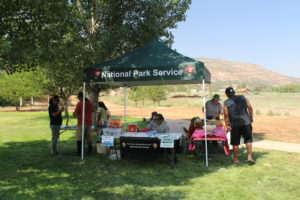 Tom and I are living in the middle of the Kaibab Paiute Reservation for the summer. Pipe Spring is paying for us to stay at the Kaibab Paiute Campground, across the street from the monument. Because we live on the reservation, we are invited to special events. One of those events was the Thunder Mountain Pow Wow held at the end of August.
Tom and I are living in the middle of the Kaibab Paiute Reservation for the summer. Pipe Spring is paying for us to stay at the Kaibab Paiute Campground, across the street from the monument. Because we live on the reservation, we are invited to special events. One of those events was the Thunder Mountain Pow Wow held at the end of August.
We had never been to a Pow Wow before, so we stopped by on our day off. I was expecting kind of a family reunion with lots of Southern Paiute from the different bands. Instead, Pow Wow was more of a dance contest with various ceremonies interspersed. There were several food booths and lots of native american crafts for sale.
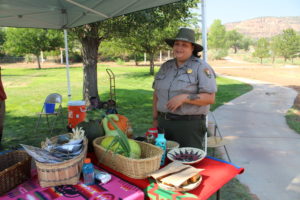
Pipe Spring National Monument had a booth at the Pow Wow, which was a saving grace for me. Ranger Autumn, who is part Paiute and lives on the reservation, served as a cultural interpreter for me. They had an announcer who talked most of the time, but I couldn’t understand anything he said. He was speaking English (usually) but the words just floated away on the air.
The Thunder Mountain Pow Wow is a dance contest with people entering in various categories. Drum groups from many different bands (a band is a part of a tribe that lives in a particular area) came to play and participate. The dance competition started with a song honoring all the warriors, and native american veterans came in carrying the flag. Then all the dancers followed in their elaborate regalia. Even though the temperature was in the high 90’s, they danced with plenty of energy.
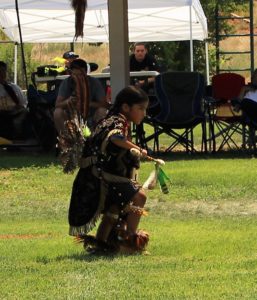
Autumn helped me understand the kinds of dancing, suited to the different styles of music. The women had traditional, fancy, and jingle. The men had traditional, fancy, grass, and chicken. Each of these categories had age groups: toddlers, juniors, teenagers, adult, and senior. The toddlers were the cutest, of course, and they all got a goody bag instead of singling one out for top prize.
The men’s fancy dance was very interesting because they wear all kinds of regalia, and each costume is symbolic of the person wearing it. I talked to a senior man whose regalia was in the Marine Corp colors. He was a Marine Corp Veteran and even had a beaded Marine Corp symbol on his frontpiece. This gentleman told me that dancers are always trying to get their children interested in carrying on the tradition. Unfortunately none of his children were interested.
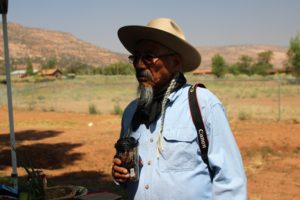
As I watched the dancing, I began to notice the change in tempos and rhythms represented in the songs. Dancers are judged on keeping the proper rhythm and telling the story of the song. The women’s traditional dance is the slowest and the men’s chicken dance is the fastest. The grass dancers act as if they are on a hunt. The jingle dancers represent the power of healing and the changing of the seasons with their noisy costumes. The dancers are not judged on their regalia so that those with the most elaborate costumes are not given more points than those with less money.
Tom and I watched the dancing for quite a while and talked to the people at the NPS booth. We also bought a Navajo burger which was a hamburger in fry bread. It was okay, but not nearly as good as the mutton on fry bread from another booth.
Many different tribes came to the Pow Wow. There were Navajo, Paiute, Zuni, and Hopi. The Pow Wow gave them a chance to celebrate and share their cultures and show off their gorgeous regalia. I enjoyed learning and sharing their culture with them.

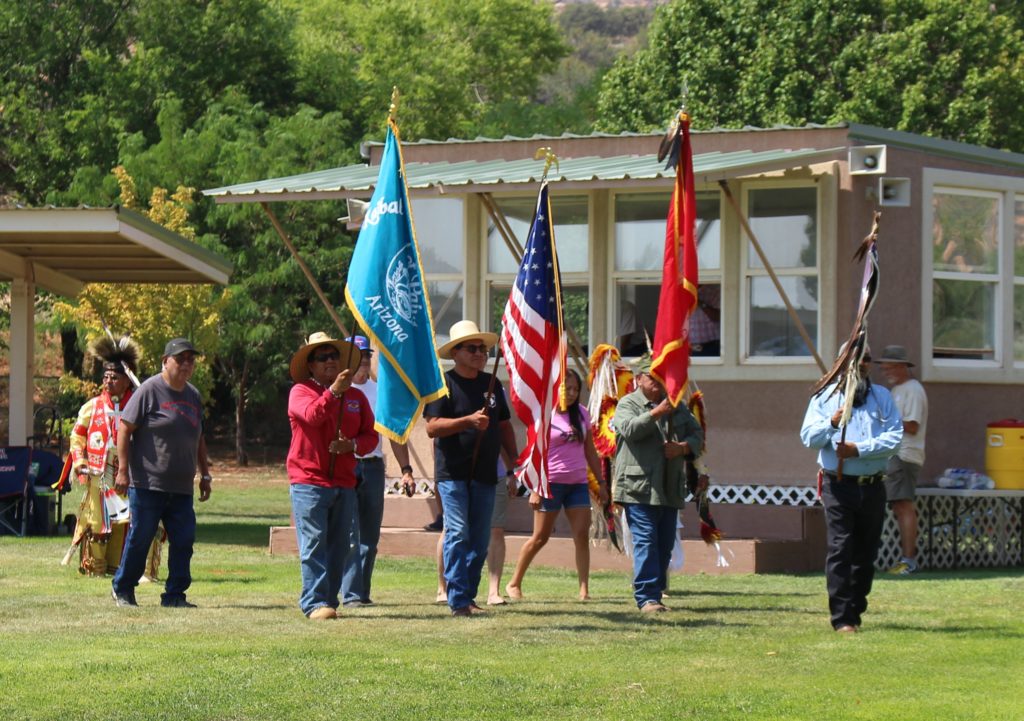
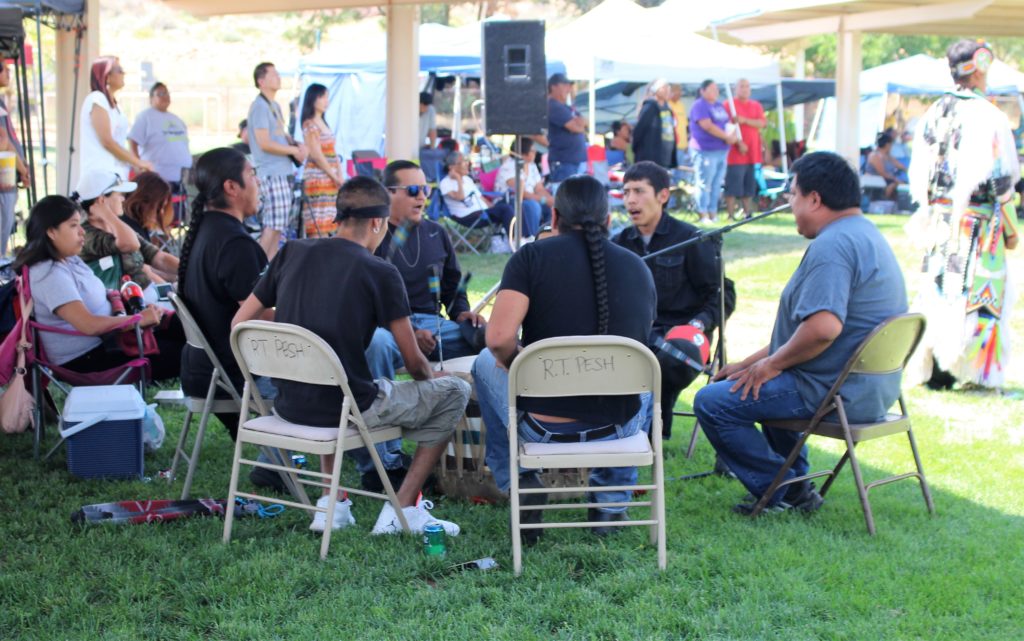
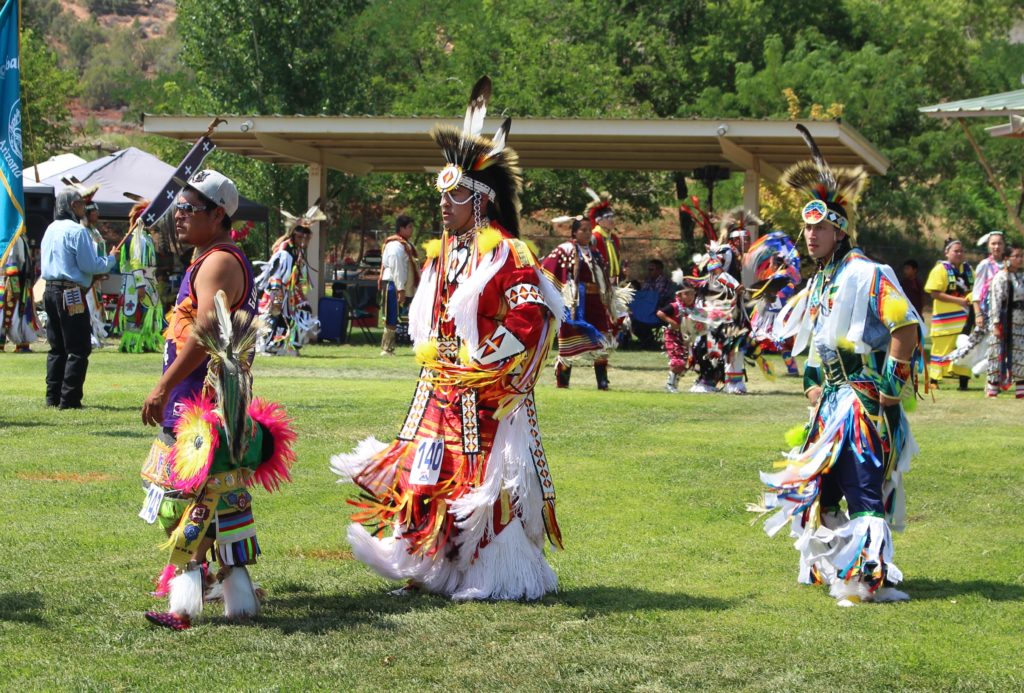
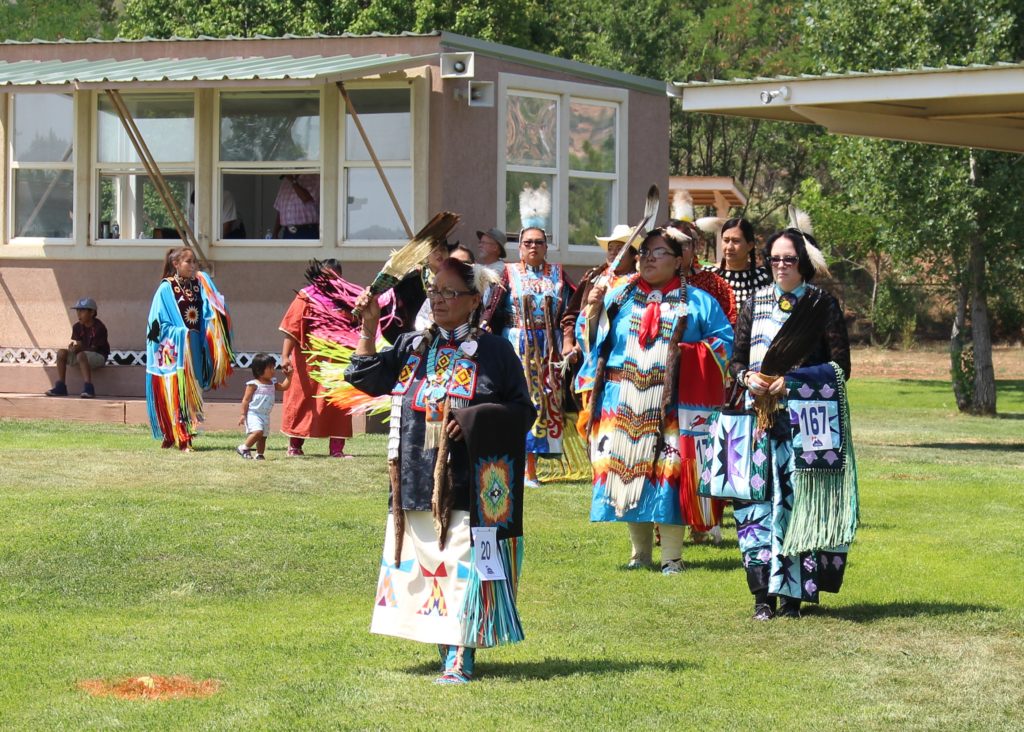
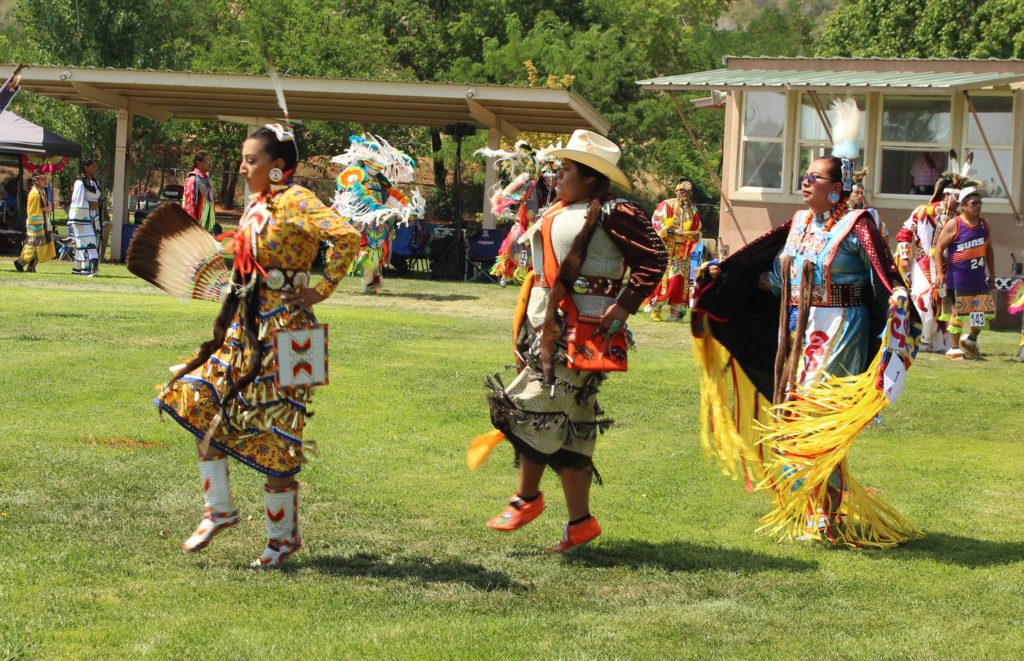
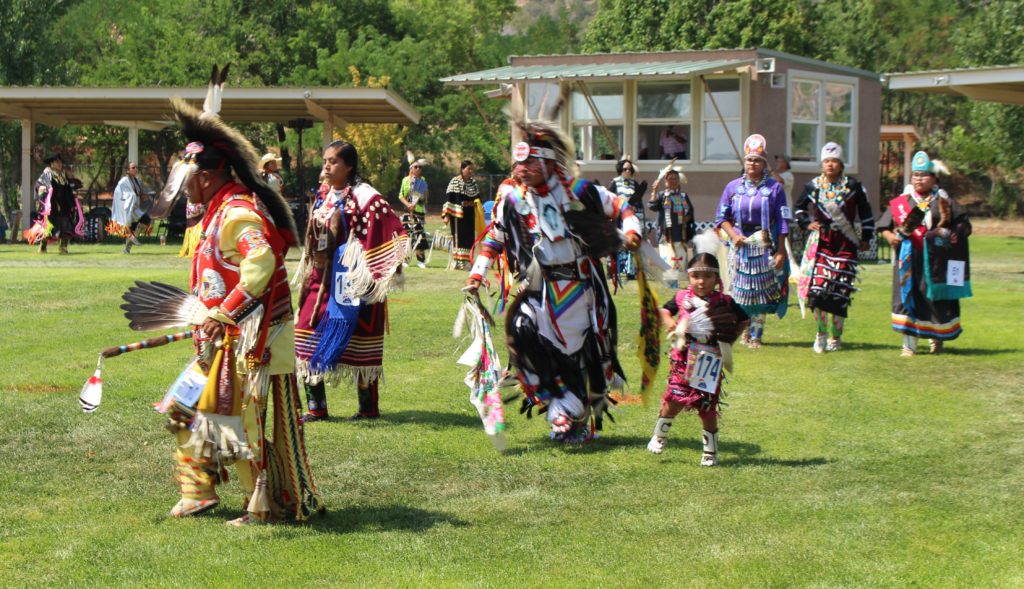
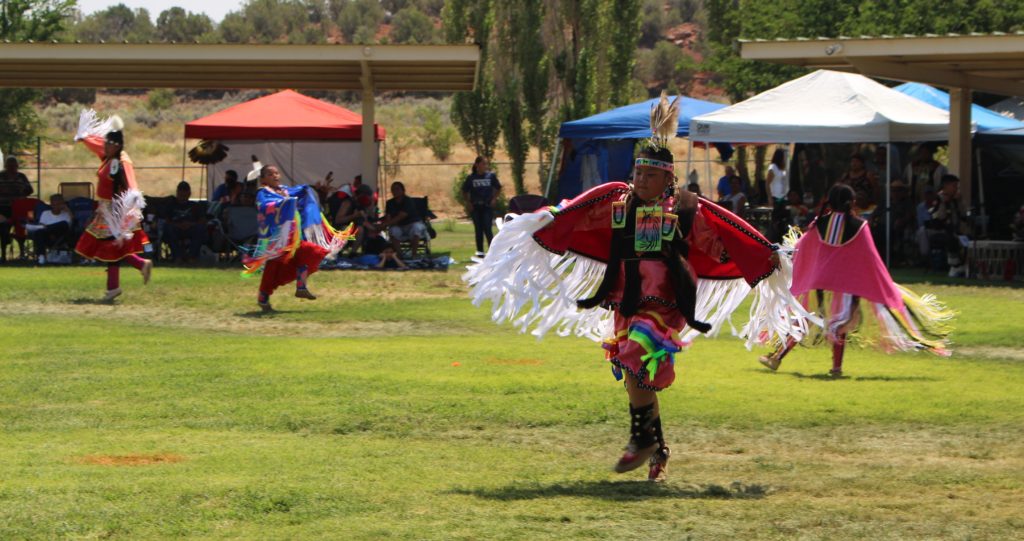
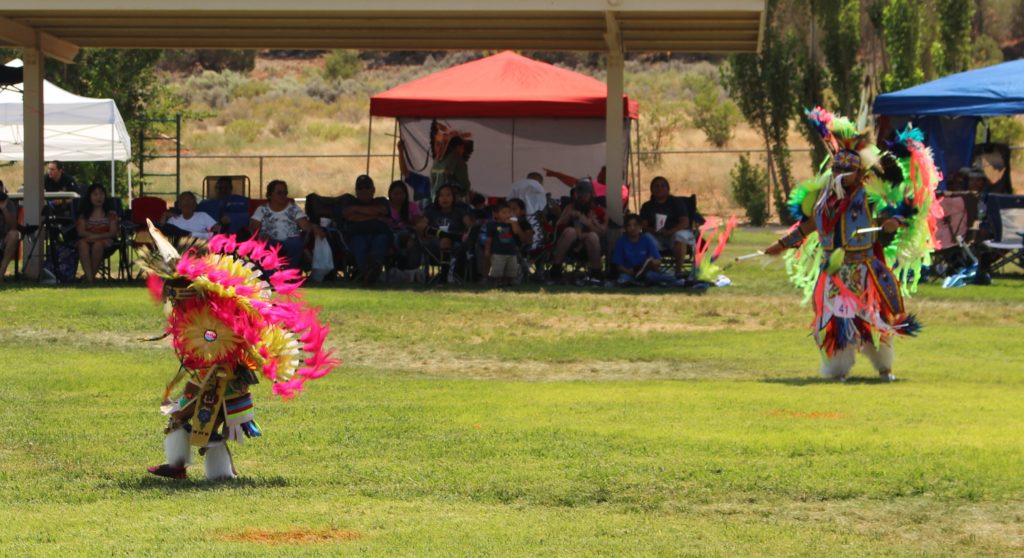
Pow wows are pretty amazing things to witness, aren’t they? I had the honor of being at one when I did a mission trip to Rosebud Reservation and I left it feeling like I had experienced something pretty wonderful. Glad you had the opportunity to be invited.
We did feel like guests at a special event. The Paiute people are very welcoming when it is a special event, but the rest of the time there are “No Trespassing – Paiute Reservation” signs all over the place. Living on the rez is an interesting experience.
What an experience! Enjoy your time on the Reservation! I keep learning so much…